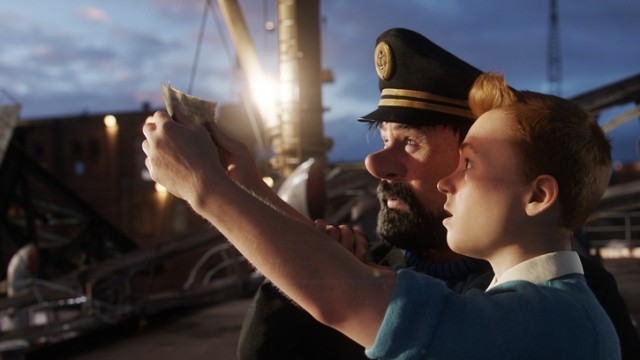Filmmakers love to tout that their films have technology that will change things forever. James Cameron was right on the money when it came to how his creation, Avatar, would revolutionize cinema via 3D, while Peter Jacksons prediction that High Frame Rate projection would work like gangbusters turned out to be laughably off-the-mark. The way Robert Zemeckis championed motion-capture would change visual effects forever turned out to be true…just not in the way he tried, time and time again, to prove that statements validity.
It’s pretty much taken for granted these days that Andy Serkis is the master of motion-capture performances, but back in the ancient age of 2002, this English actor took the world by storm by surprising everyone with his performance as Gollum. The technology utilized to bring him to life was the process now known as motion-capture, which involves actors putting on suits (that have evolved dramatically over time) that allow their movements and performance to be tracked and put into a CGI creation.
Truth be told, the idea of Robert Zemeckis being enamored with this piece of technology likely wouldn’t come as a shock to anyone. After all, the director had been pushing the envelope when it comes to visuals effects in Back To The Future, the revolutionary mixture of live-action and animation in Who Framed Roger Rabbit, and of course, inserting Tom Hanks into various eras of the 20th century in Forrest Gump. But an entire movie done in this format?? It’d be historical if done right, a laughingstock if done wrong.
For 8 year old me, the film did go wrong in its use of motion-capture, but it resulted in it being less of a laughingstock and more of a horror show. Despite anticipating the movie for many months (the first teaser released an entire year ahead of its release put the movie on my radar for the entirety of 2004), I had to briefly leave the theater upon glimpsing those dead eyed pupils that all of the main characters had. The fact that the feature has become a perennial classic on par with It’s A Wonderful Life for my generation boggles my mind considering how much it terrified me, mainly thanks to how poorly that motion-capture technique was used. It didn’t add realism to the proceedings, rather, it only created nightmares for this moviegoer.
To even the most casual observer, it was apparent the animation process Zemeckis heralded as the future had some…kinks, let’s say, to work out. I didn’t see his follow-up motion-capture effort, Beowulf, but its mixed reviews and middling box office indicated the flaws hadn’t been straightened out. Thankfully his third (and currently final) attempt created something worthwhile, all thanks to enormous improvements in the motion-capture technology, as well as a great script and multiple top-notch performances from Jim Carrey.
2009’s A Christmas Carol sounds like the kind of project that should go haywire with ease, but it’s surprisingly mature tone make it a thoroughly compelling journey, and the animation helps enhance, not distract, from the story. That should be how motion-capture is used in all of its appearances; it’s there to serve a story and characters, not the other way around. It’s a pity it took a tremendously talented director like Zemeckis this long to figure it out, but considering how great A Christmas Carol is, I’ll take a page from Scrooges back and embrace the holiday spirit by saying “Better late than never”.
After that effort, Zemeckis returned to live-action filmmaking with the 2012 film Flight, but his influence on the world of motion-capture could be still felt by his company Imagemovers Digital, which was set up at Disney to make films done in the format of motion-capture animation. The company was shuttered before the release of their second movie, Mars Needs Moms!, and the epic financial failing of that film made the closure Imagemovers Digital a smart one in hindsight. 9 months after that box office bomb debuted, the (currently) last American animated movie done in the motion-capture process was released, it’s name being The Adventures of Tintin.
The Steven Spielberg adventure was a natural fit for animation, considering its source material was a series of graphic novels by Herge that had its entire cast of characters carry a distinctive design that would have been damn near impossible to translate to live-action. In the confines of motion-capture, Steven Spielberg brought to life Tintin and Captain Haddock to great success, helped by Weta Digital, whose work in the field of motion-capture includes Gollum, the Na’vi and Caesar in the new Planet of The Apes films. It’s no wonder, with that impressive work under their belt that their efforts on Tintin blew the likes of The Polar Express out of the water.
Today, that looks like a noble last hurrah for the art form, with motion-capture being mainly utilized as a way to help merge the fantastical with live-action characters and environments (the aforementioned modern day Planet of The Apes movies are a perfect example of this trend). Will it ever return? Due to the enormous cost of these movies (A Christmas Carol cost $200 million alone) and the erratic results of these films animation, probably not. But if the likes of Tintin, as well as characters such as Davy Jones and Neytri, have taught us anything, it’s that Zemeckis was right, at least, in knowing that motion-capture had a very important role to play in the future of cinema.

